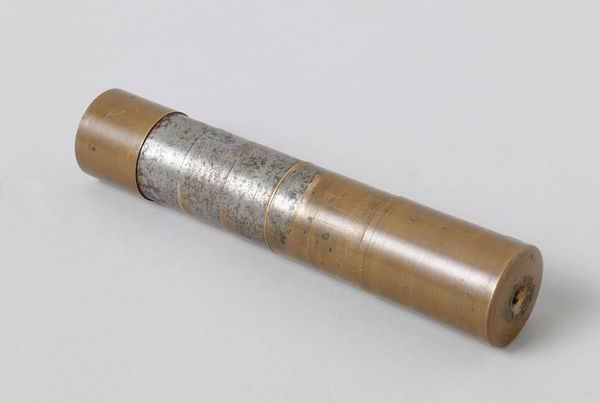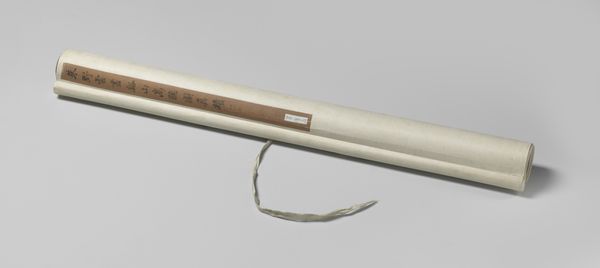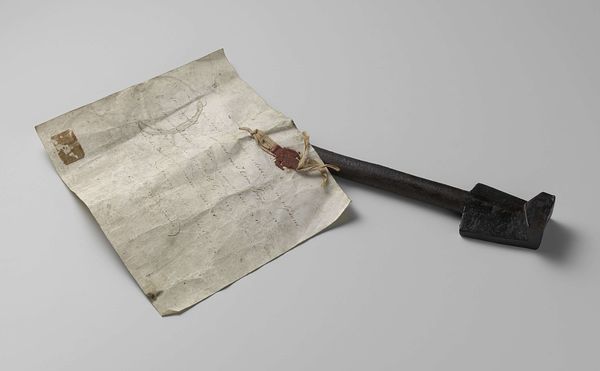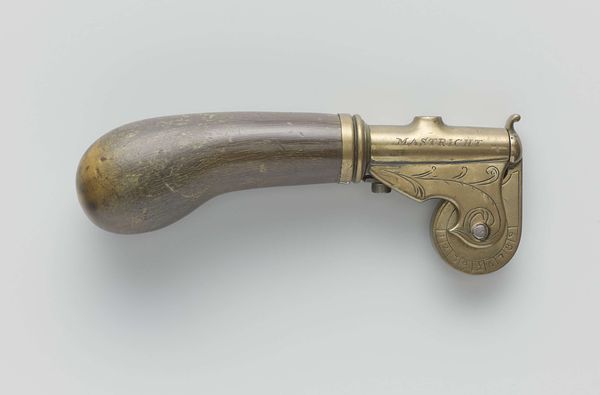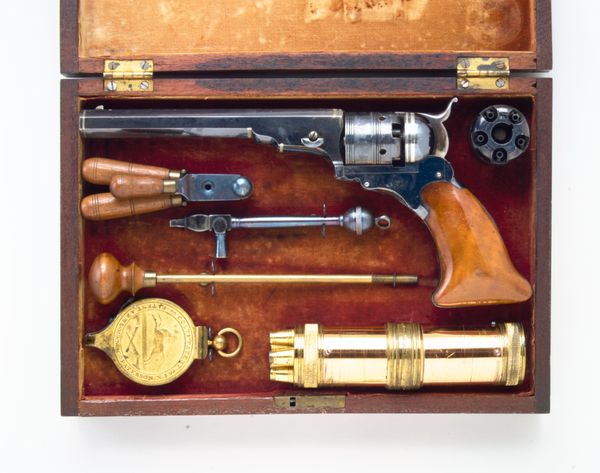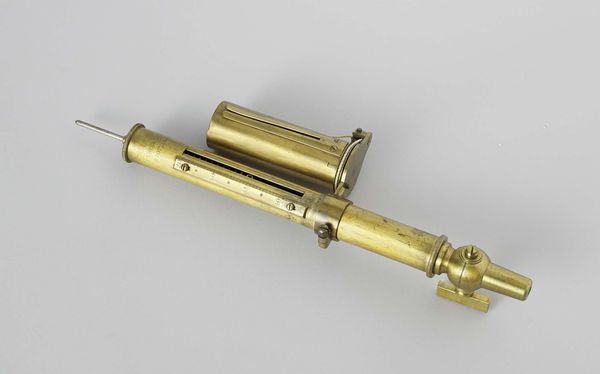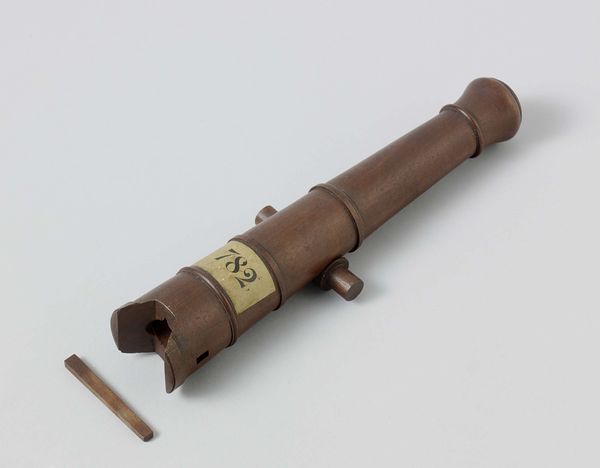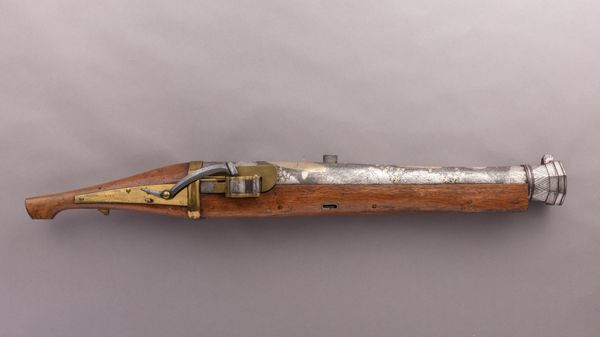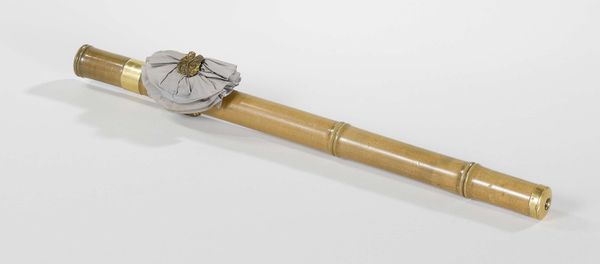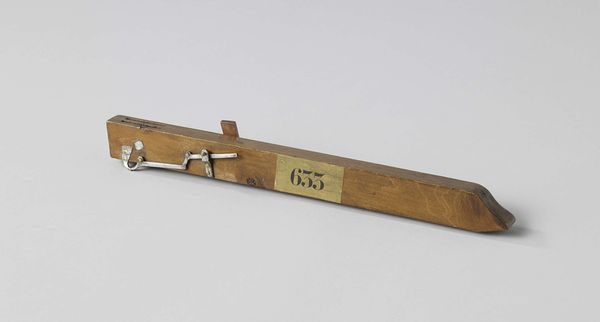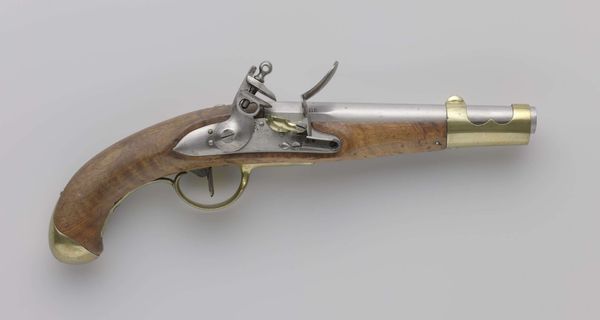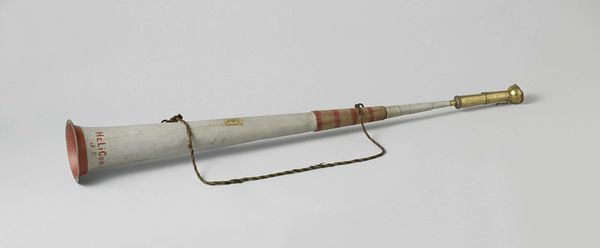
paper, photography
#
paper
#
photography
Dimensions: certificate height 72.9 cm, certificate width 40.8 cm, container length 44 cm, container diameter 8.4 cm, outer case length 46.8 cm, outer case diameter 11.5 cm
Copyright: Rijks Museum: Open Domain
Curator: Alright, let's dive into this fascinating object. This is titled "Certificate in Case," dating back to 1865. It appears to be a photograph showcasing both a paper document and its associated cases. The document is attributed to Willem III, King of the Netherlands. Editor: My first thought? Intricate protection. Like burying treasure in layers. There’s the outer case, then the rolled-up certificate. Feels like preserving something immensely valuable. Curator: The layers certainly point to a conscious effort to safeguard the document. Beyond its physical protection, we can examine this piece within a framework of power, legacy, and the creation of historical narratives. How did displays of sovereignty legitimize ruling powers in 19th-century Europe? Editor: Power is right. Gold always screams power, doesn’t it? Look at the gleam on that tube! The paper certificate itself... all those tightly packed lines of text make it seem incredibly official, unyielding almost. Does it feel intimidating? A little! Curator: Intimidation could well be part of it. Think about the intended audience and the performative aspect of bestowing a Royal Certificate. The use of elaborate script and official seals—and of course that case. How might we relate this display to similar practices from other historical moments, especially ones with clear gendered, racial, or class-based implications? Who benefits from displays like this and who is implicitly excluded? Editor: It’s the contrast I find so striking. A stiff, serious document bundled inside these containers that look like tiny, precious jewel boxes. A contradiction there, between a decree meant for many perhaps, but guarded and hidden like it’s just for a privileged few. Like history put into fancy dress. Does it matter what it actually *says*, versus what it *represents*? Curator: It is important to study the text of documents and its historic ramifications. To ask what actions such documents precipitated, what subjugations they caused. Context truly enriches our understanding here. It enables us to see objects like this as powerful cultural and political artifacts. Editor: Yeah, well for me? The next time I have to mail something important I will sure put some decorations to the packaging! Thank you. Curator: Of course. It highlights the enduring relevance of exploring these items, encouraging us to look critically at inherited authority and documented stories of both access and subjugation.
Comments
No comments
Be the first to comment and join the conversation on the ultimate creative platform.
